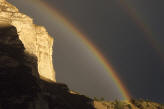|
U.S. National Parks by ParkReservations.Com and Yellowstone Net |
 |
|
|
Crater Lake National
Park |
||
|
Plan Your National Park Vacation Today! |
||
|
||
|
U.S. National Parks by ParkReservations.Com and Yellowstone Net |
 |
|
|
Crater Lake National
Park |
||
|
Plan Your National Park Vacation Today! |
||
|
||
|
Other
Popular Destinations:
Greater Yellowstone •
Colorado •
Jackson Hole •
Hawaii •
Alaska •
California |
|||||||||||||||||||
|
Introduction
Plan Your Visit (Map)
Weather Activities
Wildlife
History |
|||||||||||||||||||
|
|
|
||||||||||||||||||